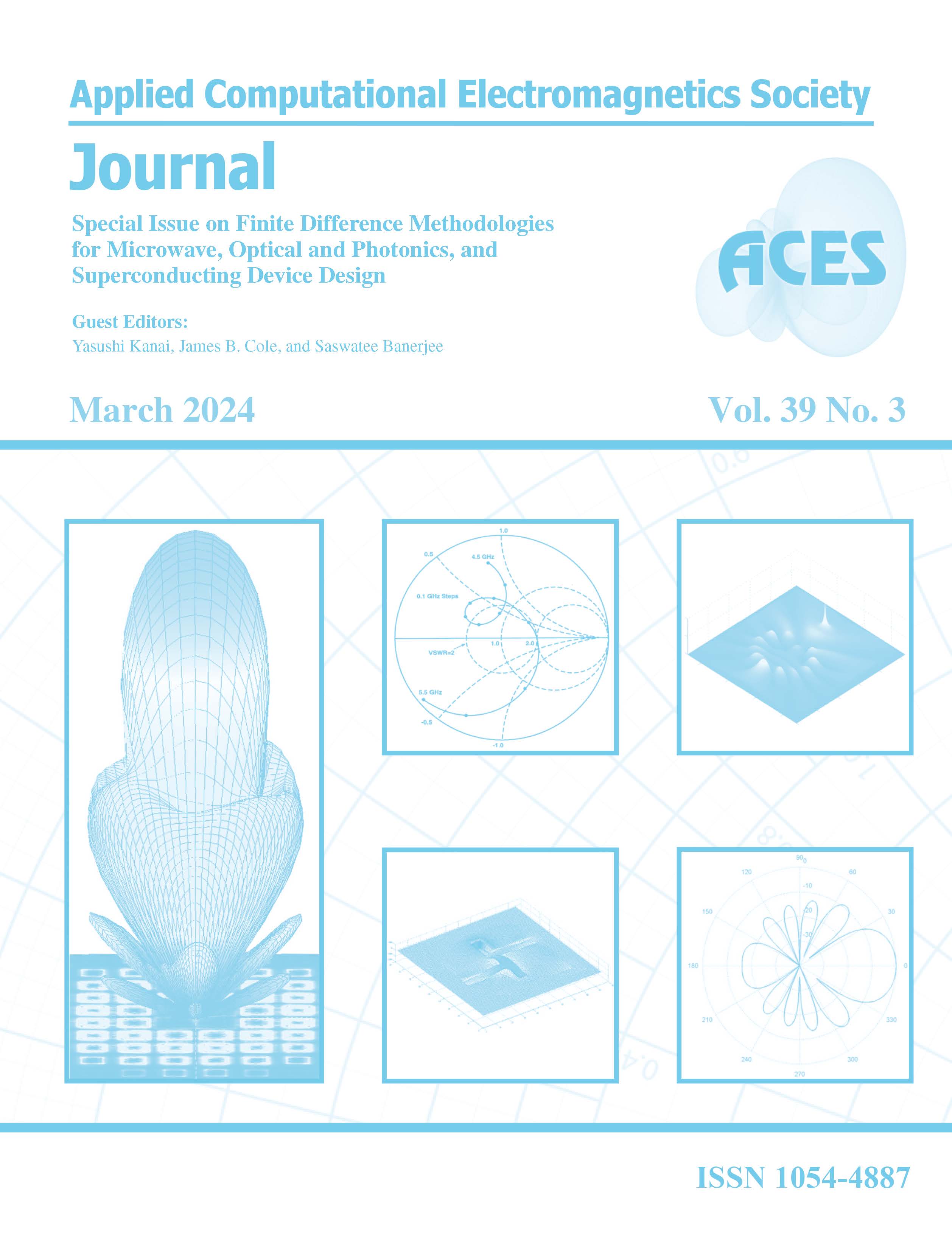Impact Evaluation of an External Point Source to a Generalized Model of the Human Neck
##plugins.pubIds.doi.readerDisplayName##:
https://doi.org/10.13052/2024.ACES.J.390306关键词:
biomedical engineering, computational electromagnetics, Green’s function methods, wireless body area networks摘要
A methodical approach for assessing the effects of an external point source to a non-spherical model of the human neck is presented in this paper. The neck model consists of multilayered spheres to represent the skin, fat, muscle tissues, thyroid, and esophagus. The novel geometry enables the formulation of dyadic Green’s functions to accurately calculate the electric fields, considering the suitable surface boundary conditions and the superposition principle. Numerical outcomes for a Hertz dipole (i.e., a wireless network antenna) at the frequency of 2.4 GHz certify the benefits of the technique and elaborately describe the responsiveness of the neck/thyroid to the selected source.
##plugins.generic.usageStats.downloads##
参考
Z. Jiang, W. Liu, R. Ma, S. H. Shirazi, and Y. Xie, “Lightweight healthcare wireless body area network scheme with amplified security,” IEEE Access, vol. 9, pp. 125739–125752, 2021.
L. Liu, J. Shi, F. Han, X. Tang, and J. Wang, “In-body to on-body channel characterization and modeling based on heterogeneous human models at HBC-UWB band,” IEEE Sensors J., vol. 22, no. 20, pp. 19772–19785, 2022.
Y. Liao, M. S. Leeson, and M. D. Higgins, “A communication link based on biological implant wireless body area networks,” Applied Computational Electromagnetics (ACES) Journal, vol. 31, no. 6, pp. 619–628, 2016.
K. Sun, L. Peng, Q. Li, X. Li, and X. Jiang, “Compact zeroth-order resonance loaded microstrip antenna with enhanced bandwidth for WBAN/brain activity detection,” Applied Computational Electromagnetics (ACES) Journal, vol. 33, no. 6, pp. 631–640, 2018.
L. Berkelmann, H. Jäschke, L. Mörlein, L. Grundmann, and D. Manteuffel, “Antenna optimization for WBAN based on spherical wave functions de-embedding,” IEEE Trans. Antennas Propag., vol. 70, no. 11, pp. 11033–11044, 2022.
A. Darvazehban and T. Rezaee, “Ultra-wideband microstrip antenna for body centric communications,” Applied Computational Electromagnetics (ACES) Journal, vol. 33, no. 3, pp. 355–358, 2018.
A. Moin, A. Thielens, A, Araujo, A. Sangiovanni-Vincentelli, and J. M. Rabaey, “Adaptive body area networks using kinematics and biosignals,” IEEE J. Biomed. Health Informat., vol. 25, no. 3, pp. 623–633, 2020.
T. Alkayyali, O. Ochuba, K. Srivastava, J. K. Sandhu, C. Joseph, S. W. Ruo, A. Jain, A. Waqar, and S. Poudel, “An exploration of the effects of radiofrequency radiation emitted by mobile phones and extremely low frequency radiation on thyroid hormones and thyroid gland histopathology,” Cureus, vol. 13, no. 8, pp. 17329(1–10),2021.
S. Li, M. Yang, H. Guo, M. Liu, S. Xu, and H. Peng, “Microwave ablation vs traditional thyroidectomy for benign thyroid nodules: A prospective, non-randomized cohort study,” Acad. Radiol., vol. 29, no. 6, pp. 801–879, 2022.
J. Rizkalla, W. Tilbury, A. Helmy, V. K. Suryadevara, M. Rizkalla, and M. M. Holdmann, “Computer simulation/practical models for human thyroid thermographic imaging,” J. Biomed. Sci. Eng., vol. 8, no. 4, pp. 246–256, 2015.
J. Wang and G. Xiao, “Electromagnetic-thermal analysis of the effect of microwave ablation of thyroid nodules,” in Proc. Photon. & Electromagn. Research Symp. (PIERS), pp. 2424–2432, 2021.
G. Gu, J. Shi, J. Zhang, and M. Zhao, “Dyadic Green’s function and the application of two-layer model,” Mathematics, vol. 8, no. 10, pp. 1688(1–20), 2020.
C.-T. Tai, Dyadic Green Functions in Electromagnetic Theory, Piscataway, NY: IEEE Press, 1994.
P. De Tillieux and Y. Goussard, “Biomedical magnetic induction tomography: An inhomogeneous Green’s function approach,” in Proc. ACES Conf., pp. 1–2, 2018.
D. P. Chrissoulidis and J. M. Laheurte, “Radiation from an encapsulated hertz dipole implanted in a human torso model,” IEEE Trans. Antennas Propag., vol. 64, no. 12, pp. 4984–4992, 2016.
D. P. Chrissoulidis and J. M. Laheurte, “Dyadic Green’s function of a nonspherical model of the human torso,” IEEE Trans. Microw. Theory Tech., vol. 62, no. 6, pp. 1265–1274, 2014.
CST Studio Suite: Electromagnetic Field Simulation Software, Dassault Systemes, 2021.
##submission.downloads##
已出版
##submission.howToCite##
期
栏目
##category.category##
- Frequencies of Interest
- Microwave and MM Wave > 1GHz
- Numerical Techniques
- finite difference (static, time and frequency domain)
- Integral equations (time and frequency domain)
- high frequency techniques (diffraction theories, asymptotic methods)
- antennas (and their EM environments)
- scattering; radar cross-section
- electromagnetic propagation
- electromagnetic compatibility
- bioelectromagnetics




